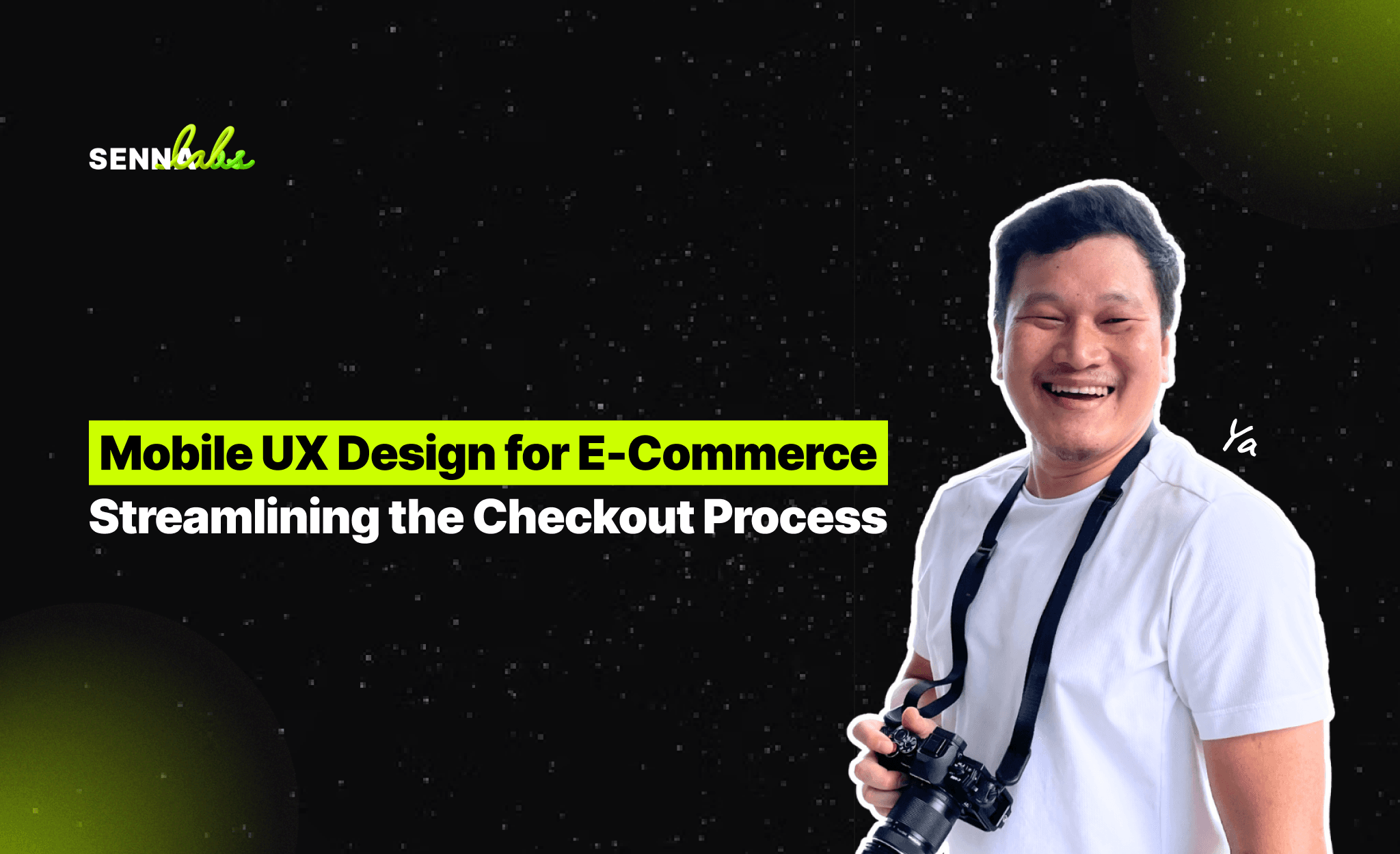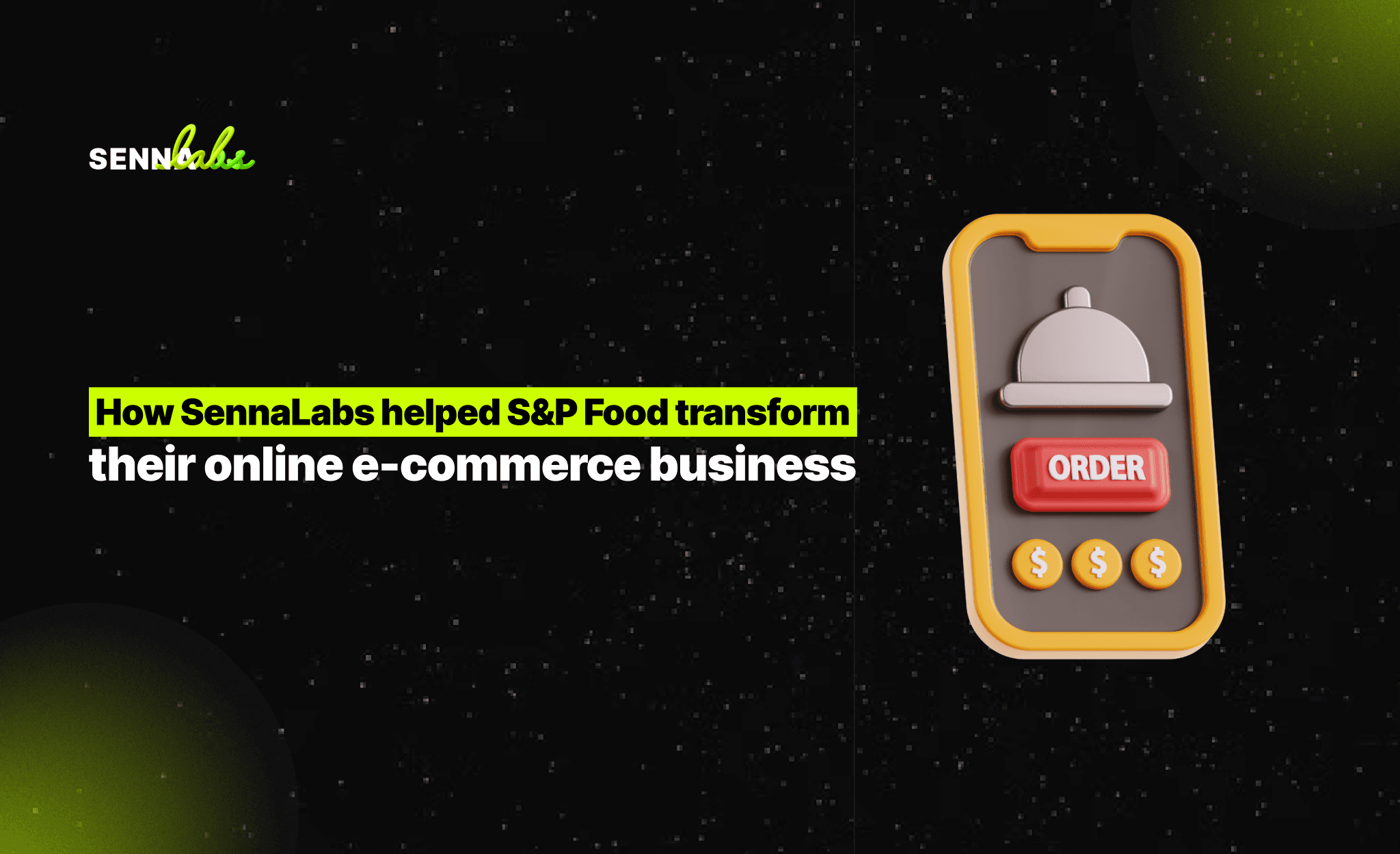Mobile UX Design for E-Commerce: Streamlining the Checkout Process
Share

The checkout process is one of the most critical stages in the customer journey on an e-commerce platform. A well-designed, seamless checkout experience can make the difference between completing a purchase and abandoning the cart. For mobile e-commerce apps, where users are often on the go and expect efficiency, streamlining the checkout process becomes even more important. In a competitive online marketplace, reducing friction points and offering intuitive, simple checkout solutions are key to boosting conversion rates.
A common scenario in the e-commerce world involved an app that simplified its checkout process by reducing the number of form fields and integrating one-tap payment options. This not only made it easier for users to complete their purchases but also led to a significant reduction in cart abandonment rates. This example highlights how crucial a smooth, optimized checkout flow is for the success of mobile e-commerce platforms.
In this article, we’ll explore the best practices for optimizing the mobile checkout process. We’ll discuss ways to eliminate friction, integrate payment gateways, and enhance user journeys to create an experience that drives conversions and keeps customers coming back.

The Importance of a Streamlined Checkout Process
Cart abandonment is a significant challenge for e-commerce platforms, with research indicating that up to 70% of shopping carts are abandoned before the transaction is completed. On mobile devices, this issue can be even more pronounced due to smaller screens, slower input methods, and potential distractions. A frustrating or overly complex checkout process often leads to users abandoning their carts and opting not to return.
Here are the key reasons why streamlining the checkout process is essential for mobile e-commerce apps:
-
User Convenience: Mobile users expect convenience. A streamlined checkout process reduces the effort required to complete a purchase, improving the overall user experience.
-
Higher Conversion Rates: When users face fewer barriers to completing a purchase, they are more likely to follow through, resulting in higher conversion rates for your business.
-
Lower Cart Abandonment: The simpler and faster the checkout process, the less likely users are to abandon their shopping carts midway through the transaction.
In the fast-paced world of mobile shopping, where attention spans are short, the checkout process needs to be quick, intuitive, and frictionless.
Best Practices for Streamlining the Mobile Checkout Process
To create a more efficient and user-friendly checkout experience, e-commerce apps need to focus on reducing friction and making the process as smooth as possible. Here are the best practices for designing a streamlined mobile checkout process:
1. Minimize Form Fields
One of the most common friction points in mobile checkout processes is the need for users to fill out long forms. While some information is necessary to complete a purchase (such as shipping and payment details), many forms ask for excessive information that isn’t immediately required.
Best Practices:
-
Only Ask for Essential Information: Limit the number of form fields to the bare minimum required to complete the transaction. For example, if a user is shipping to their own address, skip the “Company Name” field or other non-essential information.
-
Autofill and Address Suggestion: Utilize autofill for commonly entered details such as name, email, and address. Additionally, consider integrating address suggestion tools that allow users to enter a few characters and select from auto-completed options. This reduces the amount of typing required.
-
Guest Checkout Option: Not all users want to create an account before making a purchase. Offering a guest checkout option speeds up the process and removes unnecessary friction for first-time buyers.
2. Simplify Navigation and Interface
Mobile screens are limited in space, and a cluttered or complicated checkout interface can overwhelm users. The checkout process should be simple, with a clear, step-by-step flow that guides users from their shopping cart to the payment confirmation screen.
Best Practices:
-
Clear Progress Indicators: Use progress bars or step indicators to show users where they are in the checkout process and how many steps remain. This provides clarity and reduces anxiety about how long the process will take.
-
One Page or One-Step Checkout: Wherever possible, consolidate the checkout process into a single page or a very limited number of steps. Each additional page or click increases the likelihood of cart abandonment. An ideal solution might involve combining shipping, payment, and review steps on a single screen.
-
Sticky CTAs: Implement sticky “Checkout” or “Buy Now” buttons that remain visible as users scroll. This ensures they can proceed with the transaction at any point without needing to search for the next step.
3. Offer Multiple Payment Options
One of the most important aspects of the mobile checkout process is providing users with a range of payment methods that suit their preferences. By offering multiple payment gateways and integrating popular options, you cater to different user needs and make it easier for them to complete the purchase.
Best Practices:
-
Support for Mobile Wallets: Integrate popular mobile payment options such as Apple Pay, Google Pay, and PayPal. These services allow for one-tap payments, significantly reducing the time it takes to finalize a transaction.
-
Stored Payment Methods: Allow users to securely store their payment details for future purchases. This eliminates the need for re-entering payment information every time, speeding up repeat transactions and fostering loyalty.
-
Support for Local Payment Methods: If your app has a global audience, ensure that local payment methods are supported. Different regions have different preferred payment solutions, and offering localized options can increase conversions in specific markets.
4. Use One-Tap Payment Options
One-tap payments streamline the checkout process by allowing users to complete their purchase with a single tap, using saved payment details or integrated mobile wallets. This is particularly important on mobile devices, where users want to avoid lengthy processes and repeated data entry.
Best Practices:
-
One-Tap Payment Integration: Integrate one-tap payment options such as Apple Pay or Google Pay, which allow users to complete a transaction with minimal input. These systems automatically use stored payment, shipping, and billing details, making checkout almost instantaneous.
-
Express Checkout: Provide an express checkout option for users who want to skip the typical checkout flow. This could be offered on the product page itself, allowing users to go straight from adding the item to purchasing it without extra steps.
5. Optimize for Mobile Performance
The performance of your mobile app plays a critical role in ensuring that users complete their transactions. A slow or unresponsive app can lead to frustration and abandonment during the checkout process. Ensuring that your app runs smoothly and loads quickly is vital to maintaining engagement.
Best Practices:
-
Optimize Load Times: Ensure that your checkout pages load quickly, even on slower mobile networks. Large images, unnecessary scripts, or third-party integrations can slow down the process and lead to user frustration. Compress images, reduce the number of HTTP requests, and use asynchronous loading where possible.
-
Offline Support: Consider implementing offline support that allows users to browse and add items to their cart even when they’re not connected to the internet. When they regain connectivity, they should be able to complete their checkout without restarting the process.
6. Address Error Handling and Validation
One of the key frustrations during checkout is dealing with errors, especially when the user isn’t informed about the problem in a clear and timely manner. Poor error handling can lead to abandoned carts and negative experiences.
Best Practices:
-
Real-Time Error Notifications: Use real-time validation for form fields, such as credit card numbers or email addresses, to immediately notify users of any issues. Instead of waiting for them to submit the entire form, highlight errors as they type.
-
Clear and Helpful Error Messages: If there’s an issue with the payment or information provided, ensure that error messages are clear and provide guidance on how to fix the problem. For example, if a credit card is declined, specify why and suggest alternate actions, such as trying a different card or payment method.
-
Undo or Edit Options: Give users the ability to easily go back and edit their information without losing the data they’ve already entered. This makes corrections simple and reduces frustration.
7. Provide a Review and Confirmation Step
Before users finalize their purchase, it’s important to give them a chance to review their order details, including item quantities, shipping address, and payment method. This step helps prevent errors and gives users peace of mind that everything is correct.
Best Practices:
-
Order Summary: Provide a clear, concise summary of the order, including product details, pricing, shipping method, and taxes or fees. Ensure that users can easily make changes without having to start the checkout process from scratch.
-
Confirmation Screen: After the purchase is completed, display a confirmation screen with all relevant details, including the order number, estimated delivery date, and a way to track the order. This reassures users that their purchase was successful and gives them confidence in your service.
Conclusion: Improving Mobile Checkout for Better Conversions
Streamlining the checkout process is one of the most important steps you can take to improve the overall UX of your mobile e-commerce app. By reducing form fields, integrating one-tap payment options, offering multiple payment methods, and ensuring a fast, user-friendly interface, you can significantly reduce cart abandonment and drive conversions.
For mobile users, convenience is king. Optimizing the checkout process with a focus on simplicity and efficiency not only increases conversion rates but also fosters trust and encourages repeat purchases. As mobile e-commerce continues to grow, ensuring that your checkout process is intuitive, seamless, and optimized for mobile devices will be key to staying competitive and building long-term customer loyalty.

Share

Keep me postedto follow product news, latest in technology, solutions, and updates
Related articles
Explore all


